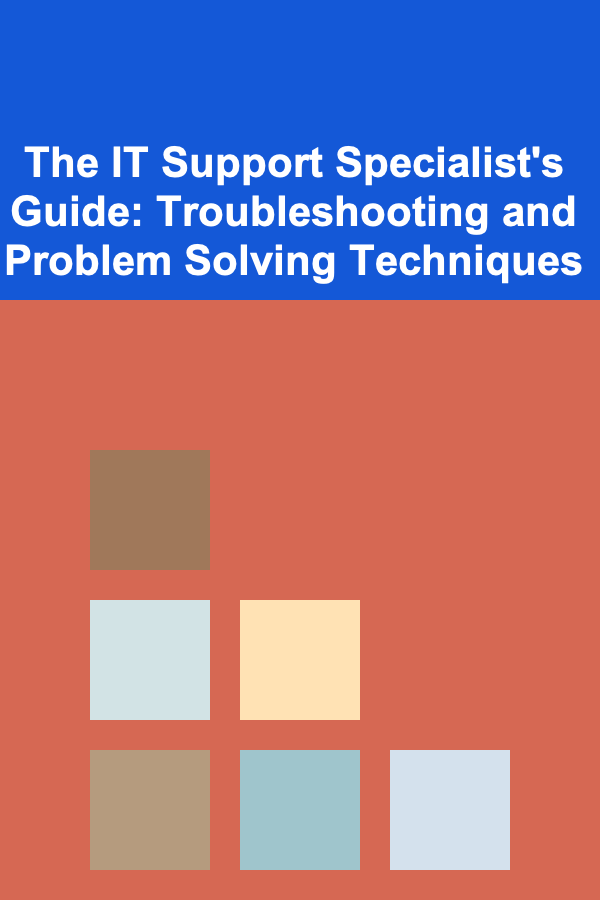
How to Network at Networking Events: A Pre-Event Checklist
ebook include PDF & Audio bundle (Micro Guide)
$12.99$5.99
Limited Time Offer! Order within the next:
Not available at this time

Networking events are a powerful tool for building professional relationships, discovering new opportunities, and growing your career. Whether you're attending a conference, seminar, or casual meet-up, making a lasting impression and creating meaningful connections can lead to collaborations, job opportunities, and industry insights. However, success at networking events doesn't come by chance---it requires preparation, focus, and the right strategies.
In this article, we will discuss the essential steps for preparing for a networking event. These tips are designed to help you approach networking events with confidence, effectively communicate with others, and maximize the value you gain from attending.
Define Your Networking Goals
Before attending any event, it's crucial to have a clear understanding of why you are going and what you want to achieve. Setting specific, measurable goals will help guide your actions during the event and ensure that your efforts are productive.
Why It Matters:
Without clear goals, networking can feel aimless. You may end up talking to random people without making valuable connections. By defining your objectives, you give yourself a roadmap that will help you stay focused and make meaningful interactions.
Tips for Goal Setting:
- Identify key people: Are you looking to meet potential employers, clients, or collaborators? If so, research the attendees and their backgrounds to prioritize who you want to connect with.
- Know what you want to achieve: Do you want to get advice from experts in your field, explore business partnerships, or increase your social media following? Be clear about your desired outcomes.
- Set measurable goals: Aim for specific actions, such as exchanging contact information with five people, attending at least three workshops, or following up with two new leads.
Research the Event and Attendees
One of the most important steps in preparing for a networking event is to research the event itself, as well as the attendees. The more you know beforehand, the more strategic and confident you'll be when engaging with others.
Why It Matters:
Understanding the event's format, key speakers, and agenda can help you plan your time and identify where you'll get the most value. Likewise, researching attendees allows you to identify who you want to meet, so you're not wandering aimlessly.
Tips for Research:
- Review the event schedule: Familiarize yourself with the sessions, presentations, and workshops that are scheduled. Decide which ones align with your interests and goals.
- Look at the attendee list: Many events provide lists of attendees ahead of time. Take the time to review them and identify people you want to connect with.
- Learn about the speakers and sponsors: Familiarize yourself with the keynotes and breakout session leaders. This will help you start conversations around their expertise or work.
- Check social media and hashtags: Explore the event's social media presence to see if there are any posts or hashtags you can engage with before or during the event.
Prepare Your Elevator Pitch
An elevator pitch is a brief and compelling introduction to who you are, what you do, and why it matters. This pitch should be concise, clear, and adaptable to various networking situations. Having a solid elevator pitch ready ensures that you're able to introduce yourself quickly and effectively in any networking scenario.
Why It Matters:
When meeting someone for the first time, you often have a limited window to make an impression. A well-crafted elevator pitch will help you stand out and pique the interest of the person you're speaking with.
Tips for Crafting Your Pitch:
- Be brief: Keep your pitch under 30 seconds---enough time to introduce yourself without overwhelming the other person.
- Highlight your value: Focus on what you bring to the table, whether it's your expertise, skills, or unique perspective.
- Make it memorable: Add a personal touch or something that sets you apart. For example, mention an interesting project or accomplishment to spark curiosity.
Example Pitch:
"Hi, I'm [Your Name], and I'm a [Your Job Title] at [Company]. I specialize in [Key Skill or Expertise], and right now, I'm working on [Current Project]. I'm excited to meet people in [Industry] to share ideas and collaborate on innovative solutions."
Bring the Right Materials
Being prepared with the right materials can make a big difference when networking. It's easy to get caught up in the excitement of the event and forget about the practical side of things, but having essential tools at hand can help you stay organized and professional.
Why It Matters:
When you're prepared, you convey a sense of professionalism and seriousness. This is especially important when networking with high-level executives or potential clients. Being ready with materials that facilitate communication shows that you value their time and are ready for business.
Tips for Materials:
- Business cards: Despite the rise of digital networking, business cards remain an effective tool for quickly exchanging contact details. Keep your cards neat and readily accessible.
- Smartphone with networking apps: If applicable, download any event apps or tools that allow you to connect with other attendees. Apps like LinkedIn, Bizzabo, or Brella can be great ways to track the event and manage your connections.
- Notebook or digital device: Bring something to take notes on, whether it's a notebook or a tablet. You never know when you'll come across valuable insights or people to follow up with.
- Professional attire: Dressing appropriately for the event is crucial. If the event is formal, make sure your attire reflects that. If it's a casual meet-up, adjust your outfit to align with the tone of the event.
Plan Your Schedule
Networking events often have a packed schedule, with sessions, workshops, networking breaks, and social gatherings. To make the most out of your time, plan your schedule ahead of time to ensure that you don't miss important opportunities.
Why It Matters:
You only have a limited amount of time at an event, so planning will ensure that you make the most of it. Whether you're there for a specific session or just to meet people, having a plan helps you stay on track.
Tips for Scheduling:
- Prioritize events: If there are multiple sessions or workshops, prioritize the ones that align with your goals. Choose those that will provide the most value.
- Take breaks for networking: Block out time for networking, even if it's just for a few minutes between sessions. These short conversations can lead to meaningful connections.
- Leave room for spontaneity: Sometimes the best opportunities arise unexpectedly. Don't be too rigid in your schedule---leave room to follow up on spontaneous conversations or attend an impromptu event.
Practice Active Listening
Networking isn't just about talking about yourself---it's about listening, too. Active listening is the process of fully concentrating, understanding, responding, and remembering what others are saying. By practicing active listening, you show that you're genuinely interested in the person you're talking to, which builds rapport and trust.
Why It Matters:
People are more likely to remember you and value the connection if you listen attentively and engage in meaningful conversations. Active listening creates a sense of mutual respect, which is essential for building long-term professional relationships.
Tips for Active Listening:
- Make eye contact: This shows that you're engaged and focused on the conversation.
- Ask thoughtful questions: Show interest by asking questions about the person's role, interests, or goals.
- Avoid interrupting: Let the other person speak without cutting them off. Respond thoughtfully when they finish.
- Paraphrase or summarize: To demonstrate understanding, paraphrase what the person has said or summarize key points to confirm your comprehension.
Follow Up After the Event
The real value of networking comes after the event, when you take the time to follow up and nurture the connections you've made. A thoughtful follow-up message can turn a brief interaction into a long-lasting professional relationship.
Why It Matters:
Following up shows that you're serious about maintaining the connection. It also provides an opportunity to build upon your initial conversation, provide additional value, or set up future meetings.
Tips for Following Up:
- Send a personalized email: Within 24 to 48 hours after the event, send a brief email thanking the person for their time and referencing a detail from your conversation to make it personal.
- Connect on LinkedIn: If you haven't already, send a LinkedIn connection request with a message referencing your meeting at the event.
- Offer value: If appropriate, offer to help with something you discussed during the event. Whether it's sharing an article, introducing them to a contact, or offering your expertise, showing value is a great way to solidify the connection.
Conclusion
Networking events are an invaluable opportunity to meet new people, expand your knowledge, and advance your career. By preparing in advance, setting clear goals, and following the steps outlined in this checklist, you can maximize your time at the event and make meaningful connections that last. Remember, effective networking is about building relationships, offering value, and staying consistent in your efforts. So, get ready, get organized, and enjoy the process of connecting with others!

How to Design a Workspace that Reflects Your Personal Style
Read More
How to Establish Boundaries Between Work and Personal Life in Your Workspace
Read More
How To Program Robots for Search and Rescue
Read More
The IT Support Specialist's Guide: Troubleshooting and Problem Solving Techniques
Read More
How To Play the Flute: Getting Started
Read More
10 Tips for Improving Your Inspection Efficiency
Read MoreOther Products

How to Design a Workspace that Reflects Your Personal Style
Read More
How to Establish Boundaries Between Work and Personal Life in Your Workspace
Read More
How To Program Robots for Search and Rescue
Read More
The IT Support Specialist's Guide: Troubleshooting and Problem Solving Techniques
Read More
How To Play the Flute: Getting Started
Read More